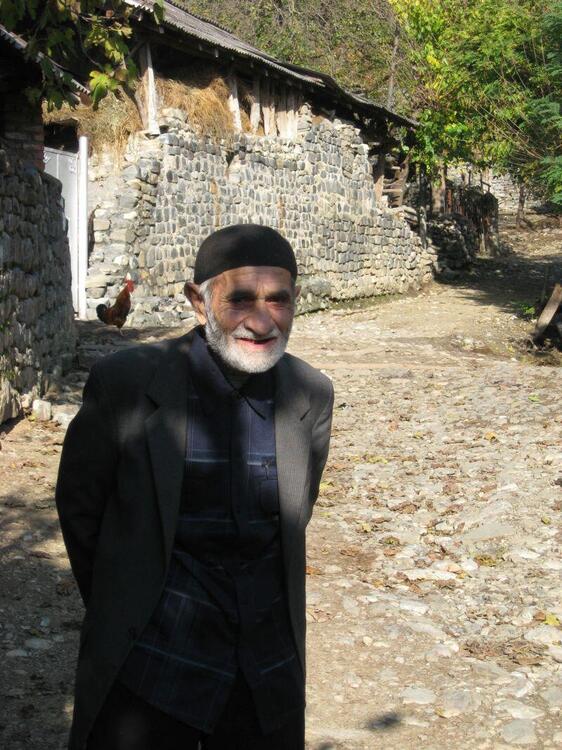
The Tsakhur live in the Caucasus Mountains . They are one of the original groups of Dagestani peoples residing in their ancient homeland. Within the modern countries of the Russian Federation and Azerbaijan. They call themselves ' Yikbi', meaning 'we of the mountains' or 'we the people'. The name 'Tsakhur' comes from a village in Dagestan called Tsakhur. Present day Tsakhurs number around 70,000 people. Ten thousand of them live along the western end of the Upper Samur River in the republic of Dagestan in the Russian Federation and in long established settlements in the Babayurtovsk Region, as well as in the Dagestan cities of Makhachkala, Derbent, Kislyar and in other Russian cities. In Azerbaijan the Tsakhur live on the southern slopes of the Caucasus Mountains in the southwestern regions of Qax, Zaqatala and Belekan as well in small pockets in the cities of Baku, Ganja, Sumgait and Sheki.
The Tsakhur language is classified within the eastern Caucasian branch of the Iberian-Caucasian language family (Nakhski-Dagestanski languages). This eastern branch of Caucasian languages comprises three Nakhski and twenty-six Dagestanski languages. Tsakhur, Archi, Khinaluq, Udi, Lezgi, Tabassaran, Aghul, Rutul, Kryz, and Budukh make up the Lezgi subgroup of the Dagestani languages. Of these the most closely related to Tsakhur are Rutul, Kryz and Budukh. Among the speakers of Tsakhur there are three recognized dialects: Tsakhur-Suvagil, Gelmets and Sabunchi.
Informally, the Tsakhur call their language' Yiksum' - 'the language of the Yikbi' while it is officially referre d to as 'Tsakhna Miz' - 'Tsakhur Language'. In ancient times the Tsakhur had a written language. According to some linguists and historians, the foundation of ancient Caucasian Albanian writing was based upon the sounds and structure of the Tsakhur language and was used in the Caucasus until the end of the ninth century. With the solidification of lslam in the Caucasus around the year 1075, the first Islamic school of higher education (madrasa) in the Caucasus was opened in t he village of Tsakhur, by order of vizer Nizama al-Mulka. During this time period, ' The Kompendi Muzani' (the Muslim code of legal and technological standards) and 'The Book oflmam AI Shafai' (the Qu'ran with commentary) were translated from Arabic into Tsakhur.
In earlier times the Tsakhur language could be heard in all Tsakhur villages, but today there are villages in Azerbaijan where it has partially or totally fallen into disuse, replaced by Azeri.
In 1934, during the Soviet period, a Tsakhur Latin -based alphabet was developed by Professor A.N. Genko. As a result, S.A. Jafarov, a specialist in Caucasian and Turkic languages, published a Tsakhur textbook that was widely distributed. From 1934 to 1938 lessons in school were taught in Tsakhur. But after this the publication of books in Tsakhur stopped. Only in 1990 did a written language, using the Cyrillic alphabet; return to the Tsakhur. Today, the Tsakhur that is taught in schools in Azerbaijan is based upon a modern Latin alphabet, while the Tsakhurs of Dagestan still use the Cyrillic alphabet.

